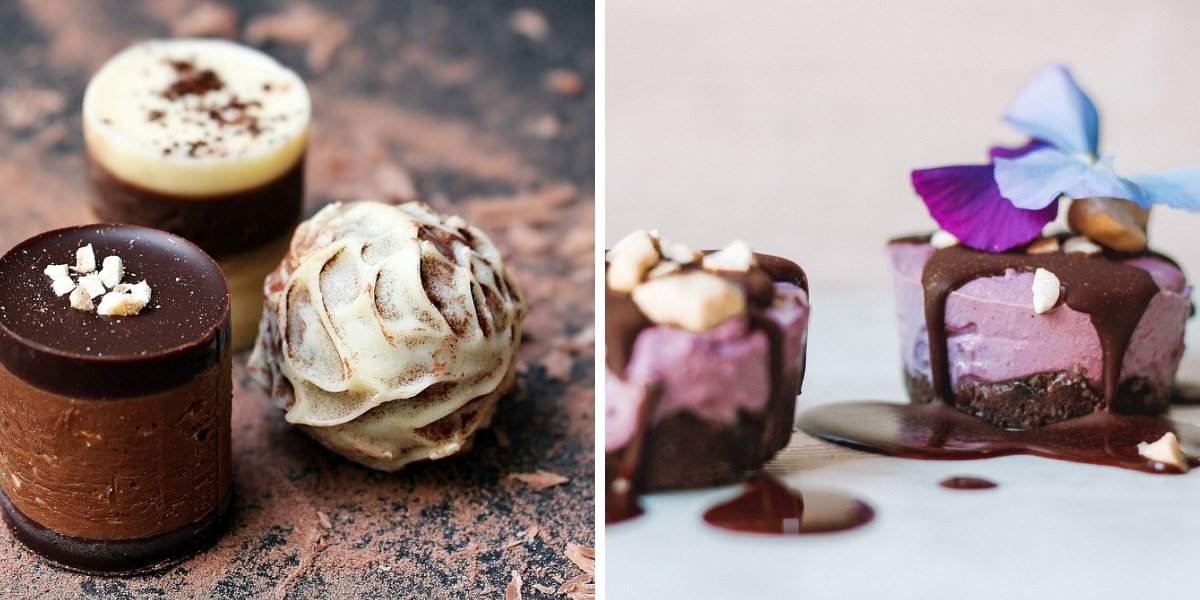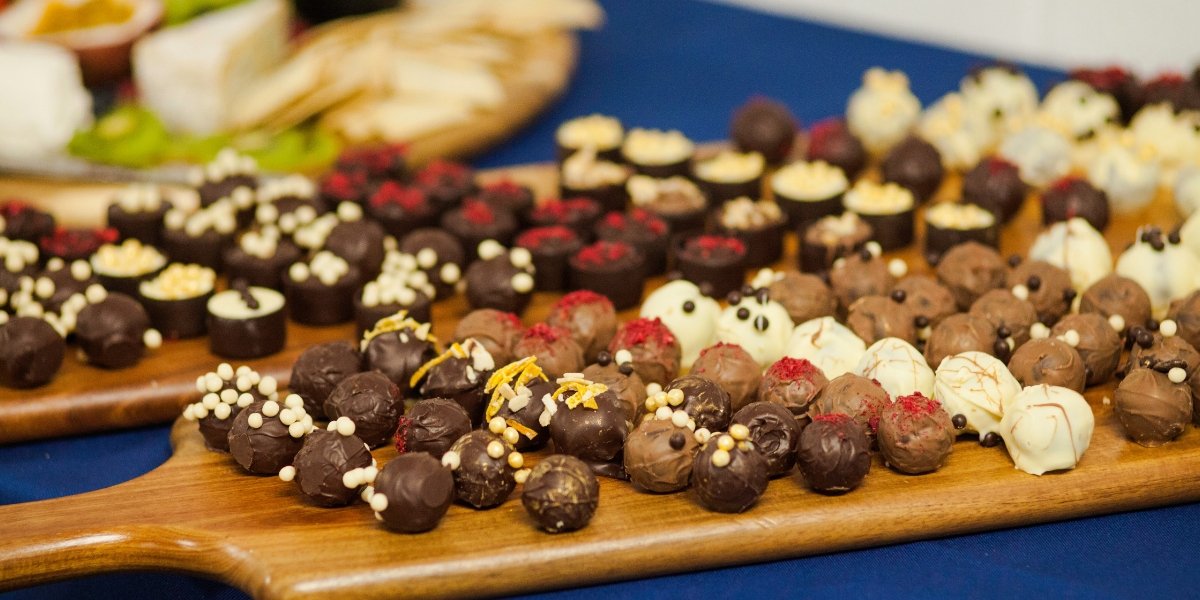-
Locations
Campuses in Europe & Middle EastCampuses in The AmericasCampuses in AsiaLe Cordon Bleu International
- Online Learning
Contact your local representative - Our Story
- Programmes
- Brochures
- News & Events
- Contact
- Find Course

The composition of chocolate
Chocolate originates from the cacao bean of South America. These beans are fermented, dried and roasted to develop flavour, and then the cacao nibs are extracted and ground. The cacao is then liquefied create chocolate liquor - the purest form of chocolate, upon which all shelf-ready chocolate products are made. Chocolate liquor is a non-alcoholic mixture of cocoa solids and cocoa butter.
Sugar, milk and other additives can then be incorporated into the chocolate liquor to alter the flavour profile. Understanding the composition of chocolate products is vital for confectioners and patissiers, as the amount of cocoa butter can affect the tempering process required for effective chocolate work.
What is chocolate tempering?
Tempering is a chemical process that chocolate must go through in order to become workable. Properly tempered chocolate is shiny, smooth and snaps when bitten or broken.
Chocolate must be heated above a certain temperature. This varies according to the volume of cocoa butter and solids in the chocolate, but typically falls between 45 and 55 degrees Celsius. Once heated, the chocolate must be rapidly cooled to 27-29 degrees, and then raised again to 32 degrees to ensure the chocolate forms a uniform crystal structure.
There are two commons ways to temper chocolate:
Learn to make beautiful desserts
Creating inspirational food begins with passion and study. If you'd like to learn how to work with chocolate and confectionery professionally, contact Le Cordon Bleu today to discuss study options.
Le Cordon Bleu offers 1- & 2-day Gourmet Short Courses in a range of delicious themes including chocolate and confectionery. Try this for starters!
3 November (Melbourne) Discover Chocolate: Christmas theme

Copyright © 2026 Le Cordon Bleu International B.V. All Rights Reserved.